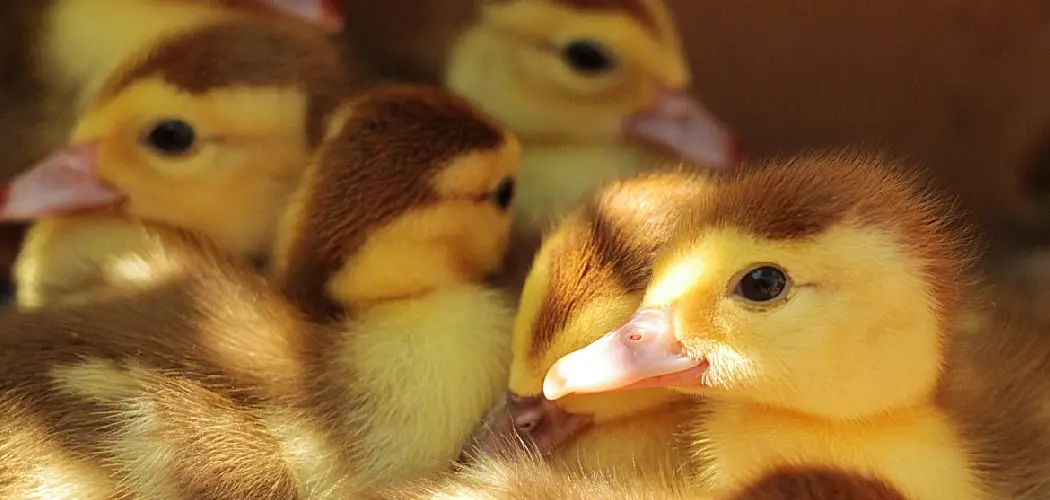Raising ducklings is a rewarding experience, but providing the necessary warmth and comfort in the absence of their mother—or a heat lamp—can be challenging. Ducklings rely on external sources of heat to maintain their body temperature during the first few weeks of life, and as a caretaker, it is vital to mimic this warm environment to ensure their health and growth.
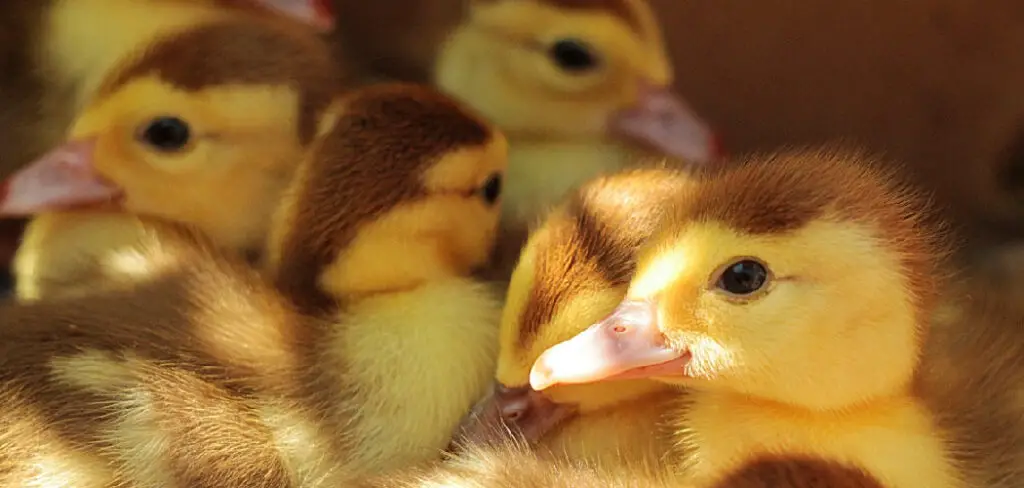
This document on how to keep ducklings warm without a lamp delves into alternative methods to keep your ducklings cozy, safeguarding their well-being while promoting a natural upbringing.
Importance of Keeping Ducklings Warm
Ducklings are not born with the ability to regulate their body temperature, and they depend on heat provided by their mothers or artificial sources. In the absence of warmth, ducklings can develop various health issues such as hypothermia, dehydration, and stunted growth. Therefore, it is crucial to keep them warm to ensure their survival and overall well-being. You can achieve this without a lamp by implementing the following techniques.
Things to Consider Before Implementing These Techniques
Before trying any of the methods discussed below, it is essential to consider a few factors to ensure your ducklings’ comfort and safety.
Age:
Ducklings are most vulnerable during their first two weeks of life, and they require more warmth than older ducklings. As they grow, their feathers will develop, providing insulation against cold temperatures. Therefore, you may need to adjust your methods as they age.
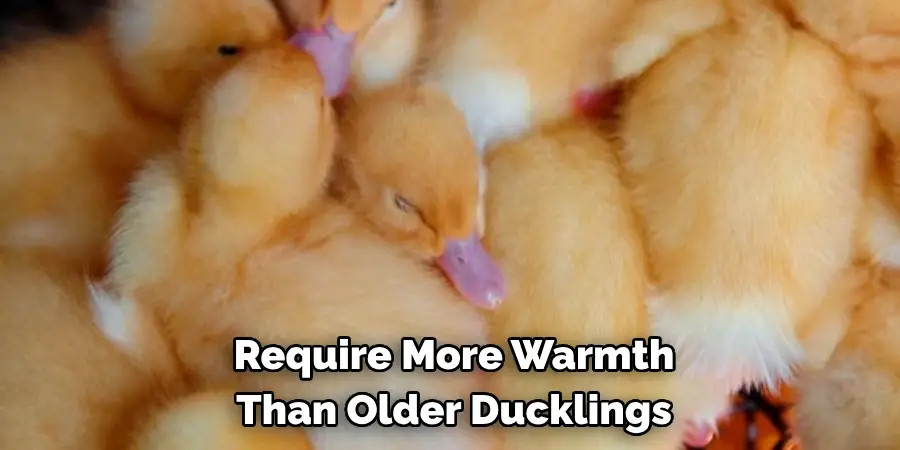
Number of Ducklings:
The number of ducklings you have will determine the amount of heat they generate and how much warmth they need. A larger group may produce more body heat than a smaller one, requiring less external warmth. Keep this in mind when deciding on the best method for your ducklings.
Indoor vs. Outdoor Environment:
The temperature of your surroundings will also play a significant role in how you keep your ducklings warm. If they are indoors, the ambient indoor temperature will be higher than outside, reducing the need for external warmth. However, if they are outdoors, you may have to consider additional methods to provide adequate warmth.
11 Step-by-Step Guidelines on How to Keep Ducklings Warm Without a Lamp
Step 1: Choosing the Right Brooder Setup
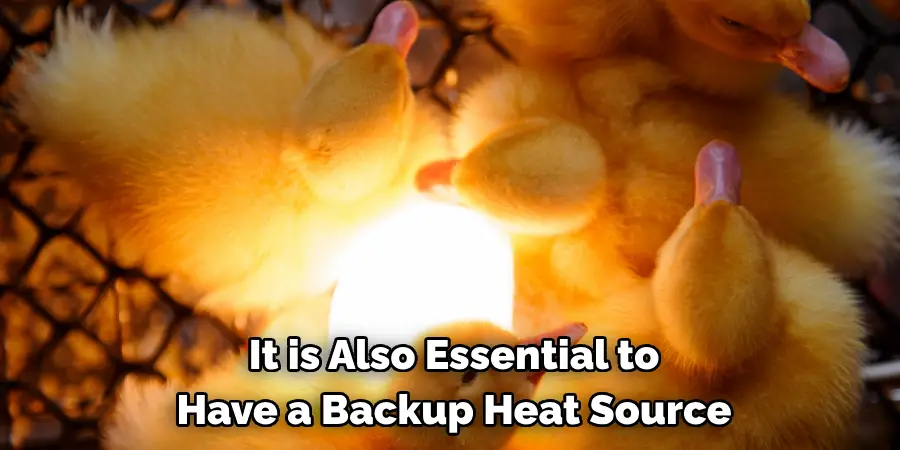
A brooder is a designated area where you can raise your ducklings safely. It should be adequately ventilated, spacious enough for the number of ducklings you have, and easy to clean. You can use a cardboard box, plastic tub, or any other suitable container as long as it meets these criteria. It should also have a non-slip surface to prevent injuries. But most importantly, it should have a heat source to keep the ducklings warm. You can use a light bulb, heating pad, or hot water bottles as an alternative to a heat lamp.
Step 2: Utilizing Heat Plates and Pads
Heat plates and pads are excellent alternatives to heat lamps. They provide a constant source of warmth, unlike light bulbs that emit light as well. You can place them inside the brooder to keep your ducklings warm or use them outside to create a heated area where they can huddle together for warmth. The heat plates and pads come with adjustable temperatures, making it easy to regulate the amount of warmth your ducklings receive. The only downside is that they may be more expensive than other methods.
Step 3: Creating a Warm Microclimate with Heating Pads
If you choose to use a heating pad, you can place them under one corner of the brooder and cover it with a towel or blanket. This will create a warm microclimate where your ducklings can huddle together for warmth when needed. Just make sure to monitor the temperature closely and adjust accordingly. It is essential to provide an area where ducklings can move away from the heat source if they get too warm. The towel or blanket should be easy to remove and clean if it gets soiled.
Step 4: Creating a Warm Microclimate with Heating Pads and Towels
Another way to create a warm microclimate is by placing heating pads under towels or blankets inside the brooder. This will provide a cozy area for your ducklings to burrow into when they need extra warmth.
The towels or blankets should be changed regularly to ensure cleanliness and prevent any potential health issues. You can also add a layer of hay or straw for insulation and extra comfort. The heating pads should cover only half of the brooder to allow for a cooler area if needed.

Step 5: Utilizing Heat Mats and Blankets
Heat mats and blankets are also suitable options for keeping ducklings warm. These come with adjustable temperatures, making it easy to regulate the warmth levels as needed. You can place them inside or under the brooder, depending on the design of your setup. Make sure to monitor the temperature closely and adjust accordingly.
Heat blankets are also great for outdoor use as they can be draped over a wire cage to create a warm shelter for your ducklings. But make sure to secure it properly to prevent any accidents. You can also place heat mats or blankets under the brooder to provide additional warmth.
Step 6: Employing Warm Water Bottles or Bricks
Warm water bottles or bricks are simple yet effective ways to provide warmth to your ducklings. Simply heat up some water and fill a bottle or wrap a brick in a towel, making sure it’s not too hot for the ducklings to come in contact with.
Place them inside the brooder, and they will radiate heat, keeping the ducklings warm. The only downside is that you will have to keep reheating the water or bricks throughout the day, making it a more labor-intensive method. The bottles and bricks should always be securely wrapped to avoid any accidents.
Step 7: Harnessing Natural Heat Sources
If you have a sunny spot in your home or outdoor area, you can make use of natural heat sources like the sun. Place the brooder near a window or outdoors on a warm sunny day, and the ducklings will absorb the warmth from the sun’s rays. It is vital to monitor their temperature closely and move them to a cooler location if necessary. You can also use body heat by holding the ducklings close to your chest or between layers of fabric, such as a shirt or blanket.

Step 8: Insulating the Brooder Environment
Insulation is crucial in maintaining a warm environment for your ducklings. Use straw, hay, or wood shavings as bedding to provide insulation and absorb moisture from the brooder floor. You can also add layers of blankets, towels, or bubble wrap around the brooder to prevent heat loss. Just make sure not to cover the entire brooder as it needs ventilation to avoid suffocating the ducklings. The brooder should also be placed away from drafts and cold areas. The ideal temperature for ducklings is between 85-95 degrees Fahrenheit in the first week, gradually decreasing by five degrees each week until they are fully feathered. It is also important to monitor their behavior and adjust the temperature accordingly.
Step 9: Monitoring and Adjusting Temperature
It is essential to monitor the temperature inside the brooder constantly. You can use a thermometer specifically designed for poultry or an infrared thermometer gun to measure the temperature accurately. Make sure to take readings at different areas of the brooder as it may not be evenly distributed. Adjust the heat source accordingly, and keep in mind that ducklings will huddle together when they need more warmth, so it’s normal to see them all in one corner. It is also essential to have a backup heat source in case of power outages or malfunctioning equipment. It is better to be safe than sorry when it comes to keeping your ducklings warm.
Step 10: The Importance of Group Huddling
Ducklings have a natural instinct to huddle together for warmth and protection. As mentioned before, this is a natural behavior that helps them regulate their body temperature. It also provides a sense of security and comfort, especially in stressful situations such as moving to a new environment or during illness. Therefore, it is important to provide enough space for your ducklings to group huddle comfortably. Overcrowding can lead to stress and aggression among the ducklings, so it’s essential to consider the appropriate brooder size for the number of ducklings you have.
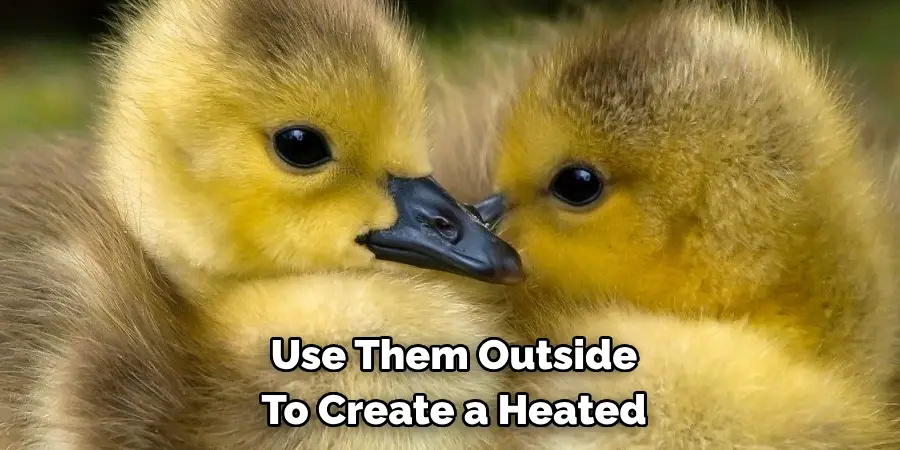
Step 11: Gradual Transition to Outdoor Environments
As the ducklings grow and develop their feathers, they will gradually be able to tolerate lower temperatures. It is essential to slowly introduce them to outdoor environments before completely moving them outside. This can be done by taking them out for short periods during warm days, gradually increasing the duration until they are fully feathered and ready to live outdoors permanently. This gradual transition will prevent any shock to their fragile bodies and ensure their ability to regulate their body temperature in different environments.
Following these steps on how to keep ducklings warm without a lamp will ensure your ducklings stay warm and comfortable, promoting their health and well-being. Remember to always monitor their temperature closely and make adjustments as needed, providing them with a safe and cozy environment to thrive in.
Do You Need to Use Professionals?
In most cases, you can successfully raise ducklings without the help of professionals. However, in certain circumstances, it might be necessary to seek expert advice or assistance. For example, if your ducklings are showing signs of illness or if you are unsure about their specific needs and care requirements. In these situations, it’s always best to consult a veterinarian or an experienced duck owner. They can provide valuable insights and guidance on how to properly care for your ducklings and address any concerns or problems that may arise.
Remember, the health and well-being of your ducklings should always be a top priority, so don’t hesitate to seek professional help when needed. Overall, raising ducklings without a lamp is possible with proper care and precautions. With the right knowledge and resources, you can provide a warm and nurturing environment for your ducklings to grow into healthy adult ducks. So next time you see those cute little fluff balls at the farm store, don’t be afraid to give them a try!
How Much Could It Cost?
The cost of raising ducklings without a lamp can vary depending on the methods and equipment used. If you opt for natural heat sources, such as body heat or sun exposure, it may not cost anything at all. However, if you choose to use heating pads or hot water bottles, there will be some expenses involved in purchasing these items. Additionally, you may need to invest in a thermometer and other equipment for monitoring and maintaining the brooder temperature.
Overall, the cost of raising ducklings without a lamp should not be significantly higher than using a traditional heat lamp method. However, it’s important to ensure that you have all the necessary resources and equipment before bringing home your new feathered friends. Proper planning and preparation can help minimize any unexpected expenses.
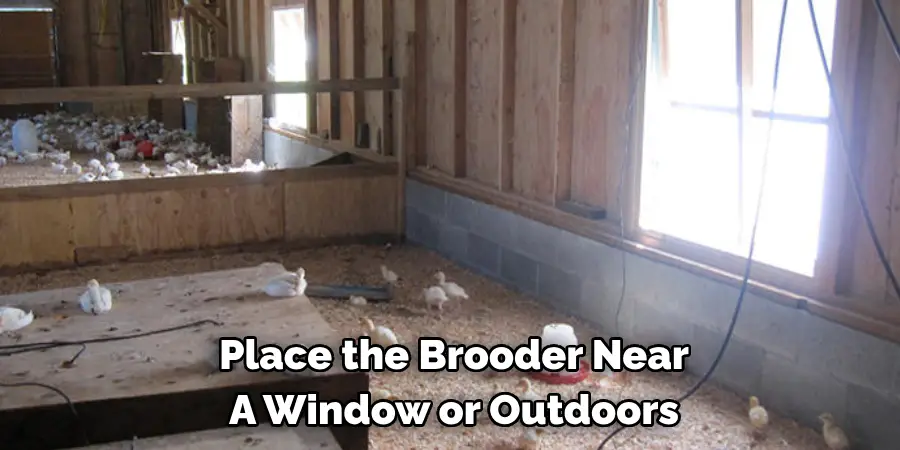
Extra Tips
- Always Provide Fresh, Clean Water for Your Ducklings to Drink. It is Essential for Their Growth and Development.
- Keep a Close Eye on the Brooder Temperature, as It Can Fluctuate Quickly Depending on Outside Factors Such as Drafts or Changes in Weather.
- Avoid Handling the Ducklings Too Much, Especially During the First Week When They Are Most Vulnerable to Stress and Illness.
- Use Bedding Materials Such as Straw, Pine Shavings, or Newspaper to Keep the Brooder Clean and Dry.
- Allow for Plenty of Space for the Ducklings to Move Around and Exercise in the Brooder.
- Make Sure to Provide a Well-balanced Diet Specifically Formulated for Ducklings to Support Their Growth and Development.
- Keep Your Brooder in a Quiet, Low-traffic Area to Minimize Stress and Disturbances for the Ducklings. Overall, With Proper Care and Attention, Raising Ducklings Without a Lamp Can Be a Rewarding and Enjoyable Experience for Both You and Your New Feathered Friends. So Don’t Be Afraid to Try It Out, and Remember to Always Prioritize the Well-being of Your Ducklings Above Everything Else
Frequently Asked Questions
Q: Can I Use a Heating Pad or Hot Water Bottle as a Heat Source for My Ducklings?
A: Yes, both of these options can be used to provide warmth for your ducklings. Just make sure to monitor the temperature closely and adjust accordingly. It is also essential to place a layer of towels or blankets between the heat source and the brooder floor to prevent direct contact and potential burns.
Q: How Do I Know If My Ducklings Are Too Cold or Too Hot?
A: You can tell if your ducklings are too cold if they huddle together and peep excessively. On the other hand, if they are too hot, they will move away from the heat source and pant with their wings spread out. It’s important to monitor their behavior and adjust the temperature accordingly to keep them comfortable.
Q: When Can I Move My Ducklings Outside Permanently?
A: It is recommended to wait until your ducklings are fully feathered, typically around 4-6 weeks of age, before moving them outside permanently. This will ensure that they can regulate their body temperature in different environments and protect them from potential predators. However, it’s always best to gradually introduce them to outdoor environments before the move for a smoother transition.
Q: Can I Keep Ducklings and Chicks Together in the Same Brooder?
A: It is not recommended to keep ducklings and chicks together as they have different needs and requirements. For example, ducklings need more space, higher humidity levels, and a different diet than chicks. It’s best to keep them in separate brooders to ensure their health and well-being.
Q: Do I Need to Use a Heat Lamp During the Night?
A: It is not necessary to use a heat lamp during the night if your ducklings are fully feathered and can regulate their body temperature. However, if you have younger ducklings or are in a particularly cold climate, you may need to provide additional heat during the night. It’s essential to monitor their behavior and adjust accordingly to keep them comfortable.

Conclusion
In conclusion on how to keep ducklings warm without a lamp, there are several methods you can use to keep your ducklings warm without relying on a heat lamp. These include using a brooder box with bedding and insulation, providing them with additional heat sources such as hot water bottles or heating pads, and creating a draft-free environment for them. It’s important to monitor the temperature and behavior of your ducklings closely to ensure they are comfortable and not too hot or too cold. With proper care and attention, you can successfully raise ducklings without the use of a heat lamp. Remember to always research and consult with experts for additional tips and advice on raising healthy ducklings. Happy hatching!
About
Outdoor Fixes is a distinguished figure in the world of Diy design, with a decade of expertise creating innovative and sustainable Diy solutions.
His professional focus lies in merging traditional craftsmanship with modern manufacturing techniques,
fostering designs that are both practical and environmentally conscious. As the author of diy,
outdoorfixes delves into the art and science of outdoorfixes-making, inspiring artisans and industry professionals alike.
Education RMIT University
(Melbourne, Australia) Associate Degree in Design (Outdoor Fixes) Focus on sustainable design, industry-driven projects,
and practical craftsmanship. Gained hands-on experience with traditional and digital manufacturing tools, such as CAD and CNC software.
Nottingham Trent University
(United Kingdom) Bachelor’s in outdoorfixes.com and Product Design (Honors) Specialized in product design with a focus on blending creativity with production
techniques. Participated in industry projects, working with companies like John Lewis and Vitsoe to gain real-world insights.
Publications and Impact
In diy, Outdoor Fixes his insights on indoor design processes, materials, and strategies for efficient production.
His writing bridges the gap between artisan knowledge and modern industry needs, making it a must-read for both budding designers and seasoned professionals.

